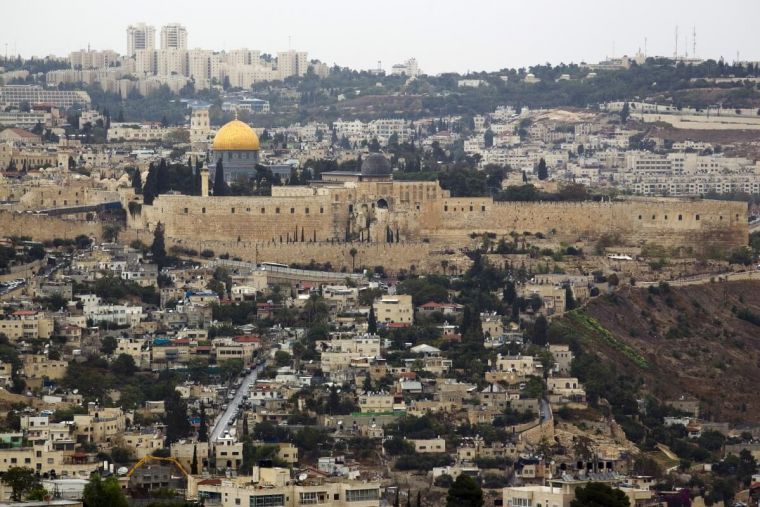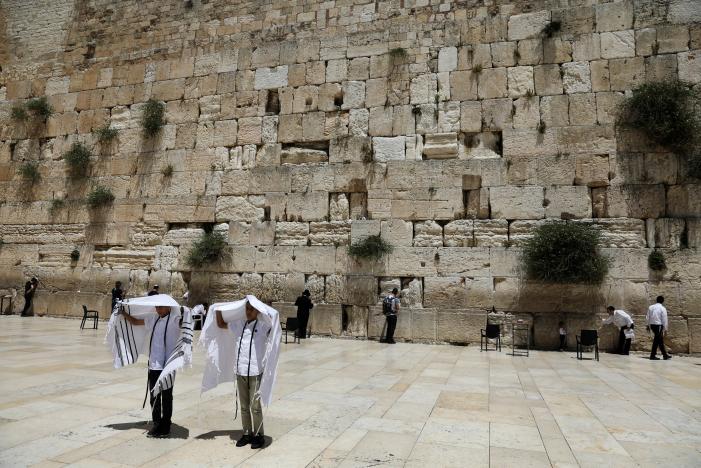Awaiting the footsteps of the Messiah: How Jews follow the 'twists and turns' of Jerusalem with love

The Isaiah passage we read last Shabbat are verses 51:12-52:12. To many people this passage is famous for the soprano aria from Handel's Messiah, 'How beautiful are the feet...'
But Jews tend to translate differently as the 'footsteps' of the herald coming nearer and nearer with the announcement that the Messiah, long-awaited by the Jews, is finally arriving.
For Jews the key lines are at the beginning. G-d addresses Jerusalem and promises her that she will overcome in the end. G-d and G-d alone is the comforter. Whatever the world throws at the Jewish people, she finally be vindicated:
It is I and I alone who comforts you. Who are you that you should fear mere mortals who will die or the son of man who will end up as grass...
Awaken, awaken, put on your strength, oh Zion. Put on the garment of your beauty, Jerusalem, the Holy City.
We have just marked the yahrzeit (anniversary of the death) of two great Israelis who also lived to see Jerusalem rebuilt in different stages and who themselves contributed towards this rebuilding.
The first was Rav Kook (1865-1935), mystic, seer, poet and visionary, who became the first Chief Rabbi of Israel under the British Mandate. While still a young man in Latvia during the pogrom period, he knew that the answer was Israel and that he would be part of the solution. So he arrived in Jaffa in 1904.
The second yahrzeit is that of Rabbi Shear Yashuv Cohen of Haifa (1927-2016), who died exactly one year ago, aged 88.
Shear Yashuv was Deputy Mayor of Jerusalem during the time of her reunification after the Six-Day War of 1967. This momentous event in the history of the Jewish people took place 50 years ago, during the life-time of many of us. As Deputy Mayor of reunified Jerusalem Shear Yashuv worked hard on educational projects and helped Jerusalemites adjust to the new reality which for many was a miracle that they had never expected to experience in their own lifetimes.
This is what is meant by the expression: 'In the footsteps of the Messiah.'

Let's end with some words written by Rabbi Shear Yashuv himself, shortly after the Six-Day War, about why he so rated Jerusalem (translated by myself in a recent biography):
Why do I love Jerusalem?
I love her because she is a city of contradictions and conflicts.
I love her for her twists and turns, her hopes and despairs
Her yearnings and agonies, her ups and downs.
I love her for her fallings-out and patchings-up.
I love her as do all her children and builders (banim and bonim)
Every single one of whom cleaves to her totally.
For in the midst of the squabbling, the in-fighting and the dissent,
One thing unites all Jerusalemites: their unique love of Jerusalem:
A love like no other.
'Seek the peace of Jerusalem; may they prosper who love thee' (Psalm 122:6)
Dr Irene Lancaster is a Jewish academic, author and translator who has established university courses on Jewish history, Jewish studies and the Hebrew Bible.











